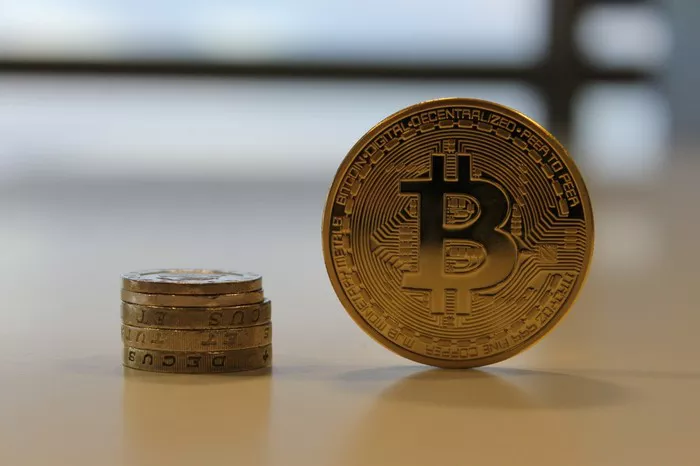In the world of stock trading, investors and traders encounter a wide variety of terms and strategies. One of these terms is “sweep,” which is commonly used in the context of market orders and high-frequency trading. Understanding what a sweep in stocks means and how it affects the market can help you make better-informed decisions, whether you’re a seasoned investor or just starting out.
In this article, we will dive deep into what a sweep in stocks is, its significance, how it works, and the impact it has on the stock market. We will also explain related concepts such as sweep orders and sweep strategies, which are critical for understanding this trading mechanism.
What Is a Sweep in Stocks?
A sweep in stocks refers to a specific type of trade order that is placed across multiple exchanges simultaneously. The purpose of the sweep is to execute a large order for a stock at the best available prices, even if that means spreading the order across different market venues. Sweep orders are designed to be executed quickly and efficiently to ensure that the order is filled without significant delays or price slippage.
A stock sweep order typically involves the purchase or sale of a significant number of shares that are broken down into smaller orders to be filled across multiple exchanges or market makers. Sweep orders are commonly used by institutional traders, hedge funds, and high-frequency trading (HFT) firms, but they can also be employed by individual investors seeking to execute large orders quickly.
How a Sweep Works in the Stock Market
To better understand how a sweep works, let’s break it down:
Order Placement: The trader or investor places an order for a large number of shares of a particular stock. This order is typically large enough that it cannot be filled on a single exchange due to either liquidity constraints or limitations in the order book.
Splitting the Order: The large order is broken down into smaller “child” orders that are sent to different exchanges or market makers. Each exchange or market maker fills the small orders at the best available prices at the time.
Execution: The sweep order is executed across multiple venues, and the trader or investor’s order is filled as quickly as possible, often within milliseconds, in the case of high-frequency trading.
Completion: The sweep order is completed once all the smaller orders are filled, and the trader’s entire position is acquired or sold.
The key feature of a sweep order is that it ensures quick execution by spreading the order across multiple exchanges and market makers, which can help avoid significant price changes or slippage. This is especially important for large orders that might otherwise move the market price unfavorably.
Types of Sweep Orders
Sweep orders can be categorized into two primary types: market sweeps and limit sweeps. Each type operates differently and serves different purposes for traders and investors.
1. Market Sweep Orders
A market sweep order is an instruction to buy or sell a stock at the best available price across multiple exchanges, without specifying a price limit. The trader simply wants to buy or sell as quickly as possible, at the best market price, even if it requires executing orders at different prices across multiple venues.
Market sweep orders are often used in high-volume trading scenarios where the trader is willing to accept a certain level of price slippage in exchange for speed and execution certainty. These orders are particularly common for large institutional trades, where speed of execution takes precedence over achieving a specific price.
2. Limit Sweep Orders
A limit sweep order is a variation of a sweep order that includes a price limit. With a limit sweep order, the trader specifies a maximum price they are willing to pay (in the case of a buy order) or a minimum price they are willing to accept (in the case of a sell order). This type of sweep order is generally used when the trader wants to ensure they don’t pay more than a certain price or sell for less than a certain price, while still executing the order quickly across multiple exchanges.
Limit sweep orders offer more control over price than market sweep orders, but they may take longer to fill or may not be filled at all if the limit price is not met.
The Role of Sweep Orders in High-Frequency Trading (HFT)
High-frequency trading (HFT) is a form of algorithmic trading that uses powerful computers and algorithms to execute a large number of orders at very high speeds. Sweep orders are frequently used in high-frequency trading to quickly and efficiently fill large orders.
HFT firms rely on sweep orders to take advantage of small price differences across various exchanges, as they are able to execute trades across multiple venues faster than traditional traders. Sweep orders enable HFT firms to capture small profits from these price discrepancies, often in milliseconds.
By utilizing sweep orders, HFT firms can capitalize on market inefficiencies and improve liquidity, making markets more efficient in the process. However, some critics argue that this kind of trading can lead to market manipulation, as it can distort prices and create an unfair advantage for high-frequency traders who can afford the necessary infrastructure.
Advantages of Sweep Orders
Sweep orders offer several key advantages, particularly in fast-paced, high-volume trading environments. Below are some of the primary benefits of using sweep orders:
1. Faster Execution
The primary advantage of sweep orders is speed. By splitting a large order into smaller parts and sending them across multiple exchanges simultaneously, sweep orders ensure that a trade is completed quickly, even if it requires going through several different venues. This is crucial for institutional investors and traders who need to move large amounts of capital without waiting for individual orders to be filled.
2. Avoiding Price Slippage
When executing large trades, especially in less liquid stocks, there is a risk of price slippage, which is the difference between the expected price of the trade and the price at which the trade is actually executed. Sweep orders reduce the likelihood of significant slippage by breaking the order into smaller pieces and filling them across various exchanges, thus helping the trader secure a better average price.
3. Increased Liquidity
Sweep orders help increase liquidity in the market. When large orders are broken down and executed across multiple venues, they provide liquidity to different parts of the market. This helps create a more efficient market environment where other traders can benefit from the increased activity and tighter spreads.
4. Flexibility in Order Execution
Sweep orders can be placed for a variety of purposes and can be customized to suit different strategies. Whether an investor needs to execute a market sweep quickly or place a limit sweep with specific price targets, sweep orders offer flexibility in how they are executed.
Disadvantages of Sweep Orders
While sweep orders offer many advantages, there are also some potential drawbacks to consider:
1. Increased Trading Costs
For traders who use market sweep orders, there may be increased trading costs due to the need to execute orders across multiple exchanges. These costs can include higher fees for accessing liquidity from different exchanges or market makers. Additionally, depending on the stock being traded, the liquidity at different exchanges may vary, potentially leading to less favorable prices.
2. Potential for Market Impact
Large sweep orders, especially in illiquid stocks, can cause significant price movements. This can lead to an adverse impact on the market, such as causing the stock price to move unfavorably for the trader. While this is less of an issue in highly liquid markets, it can be a concern for stocks with lower trading volume.
3. Dependence on Technology
Sweep orders rely heavily on advanced technology and algorithms to execute trades quickly and efficiently. For individual investors without access to high-frequency trading platforms or sophisticated trading tools, placing a sweep order may not be as effective. This can create an uneven playing field between institutional investors and individual traders.
Conclusion
Sweep orders are a powerful tool for executing large trades quickly and efficiently. By breaking down a single large order into smaller pieces and sending it across multiple exchanges or market makers, sweep orders help minimize delays and price slippage. While they are commonly used by institutional traders, high-frequency traders, and hedge funds, individual investors can also benefit from understanding how sweep orders work.
As with any trading strategy, sweep orders come with their own set of advantages and disadvantages. They offer speed, flexibility, and the potential to avoid price slippage, but they can also lead to increased costs and market impact, especially in less liquid markets. Traders must carefully consider the implications of using sweep orders and ensure they align with their trading objectives and risk tolerance.
By gaining a deeper understanding of sweep orders, traders can make more informed decisions, execute trades more efficiently, and optimize their trading strategies. Whether you are trading in the equities market or engaging in more complex trading strategies, understanding the role of sweep orders can be a valuable tool in your trading arsenal.
Related topics:
































